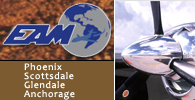Spring is attempting to officially spring, and that means freezing temperatures and the weather phenomena associated with it—snow and ice—are fast disappearing. Except in the flight levels.
Airframe icing can be a real concern in the spring when ambient temperatures and moisture saturation aloft can be ideal for the formation of ice on wings and tail leading edges, propeller blades, engine inlets, and windshields.
As all pilots know, airframe icing belongs in the same category as thunderstorms as a flight condition to be treated with utmost respect. Knowledge is key to safely avoiding ice or dealing with it in an airplane approved for flight into known icing, as is the case with Turbo Commanders.
The FAA has just added to the icing knowledge base with a new “Ice-Induced Stall Pilot Training” film. Despite the government-gray title, there is much to learn in this 30-minute production, accessible on YouTube: link
The film is an update of NASA’s original 1998 video on tailplane icing, and in the introduction the FAA says the update was prompted by a 30-year study of icing-related accidents that concluded that most such accidents resulted from wing stalls and not tail stalls. Thus, the film aims to help pilots understand the phenomenon of wing and tail stall while flying in icing conditions by examining icing certification rules and recommending cockpit procedures to mitigate the potential for icing-induced stalls.
Some interesting points made in the film:
-
- The majority of the general aviation fleet, including aircraft previously certified for flight into icing conditions, may not meet the latest icing certification standards. Many aircraft flying today were certified before the latest anti- and deice certification rules were enacted. A study of non-fatal ice-related upsets over the past 25 years found that the stall warning did not activate before a wing stall occurred. The study involved many different aircraft models in the cruise, approach, and landing phases of flight.
- The study concluded that an airplane’s susceptibility to tailplane stall may not be known, and that the stall warning system may not activate prior to a stall in icing conditions.
- An ice-contaminated wing increases stall speed significantly—as much as 20 knots.
- One of first signs of airframe icing is an increase in drag, resulting in the need for more power, loss of climb performance, and loss of airspeed.
- Tail stalls are very rare, but can occur, usually with full- or nearly-full flaps deployed, which moves the center of lift aft on the wing. Control forces will feel lighter, the pilot may have difficulty trimming, and could experience PIOs. The recovery from a tailplane stall is opposite that of a wing stall—pull back on the yoke, gradually reduce flaps, and decrease power.
The FAA is leading a rulemaking effort to both update training for wing-stall recognition and recovery, and cockpit procedures in icing conditions. In the meantime, devote 30 minutes to adding to your knowledge of, and respect for, airframe icing. Watch the film.




